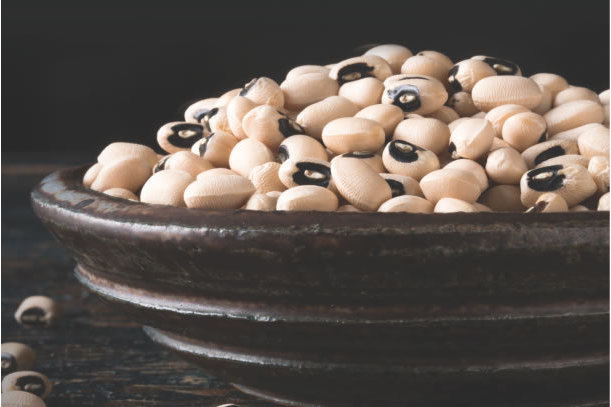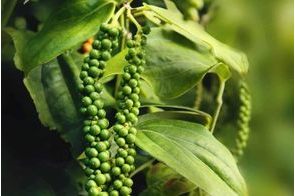Increasing market accessibility of bio-fortified foods in Nigeria

Summary
The micronutrient-enhanced crops are in Nigeria but unavailable to the people who need them most.
The increasing use of biofortification technique as a means to enhance the nutritional content of crops such as cassava, maize, sweet potato, rice, millet, wheat and beans is pushing the growth of the market around the world, according to a report by Fior Markets, an India-based futuristic market intelligence company. The global biofortification market is expected to reach $130.4 million by 2025, achieving a com-pound annual growth rate (CAGR) of 9.7 per cent compared to the 2017 market value of $62.2 million.
Biofortified food crops (BFCs) are crops whose nutritional quality have been improved through agronomic practices or conventional plant breeding to increase the amounts and bioavailability of specific micronutrients like zinc, iron and vitamins. Micronutrients are vitamins and minerals needed by the body in small quantities but are very vital for healthy development, prevention of diseases and general well-being. Biofortification has been promoted by some development practitioners as a way to tackle malnutrition in Nigeria and across Africa.
Micronutrient deficiencies can trigger serious health conditions, including those that can cause reduced mental clarity and impairment of overall capacity. Vitamin A, zinc and iron deficiencies are common in poor countries where people are unable to afford diverse range of diets that include vegetables and fruits. This underscores the need to increase the nutrients available in foods that are regularly consumed in those countries.
Vitamin A deficiency occurs when the body lacks sufficient amounts of the vita-min required for physiological functions of body systems. In children, vitamin A deficiency can cause vision impairments and eventually blindness. According to the World Health Organisation (WHO), vitamin A deficiency is the leading cause of prevent-able blindness in children.
In pregnant women, the vitamin deficiency can contribute to night blindness and maternal mortality. It can also weaken the body’s immune system, making it easy for infections to thrive. Examples of dietary sources of vitamin A are leafy green vegetables, dairy products, carrots, among others.
Iron deficiency occurs when there is insufficient amount of the mineral iron in the body. The body needs iron to make hemoglobin, a protein that enables the red blood cells to transport oxygen to body tissues. Iron requirement is higher during pregnancy. Hence, insufficient supply of this important mineral can increase the risk of premature delivery and low birth weight in a newborn. In addition, anemia – a condition caused by iron deficiency – can result in tiredness and low breast milk production in women. Foods rich in iron include red meat, seafood, beans, peas, dark green leafy vegetables.
Zinc is an essential mineral that needs to be taken through the foods we consume because the body does not produce it naturally. It helps to strengthen immune function, promote wound healing and other physiological activities of the body. Zinc-rich foods are also high in protein such as sea foods, meats – beef, pork and chicken – beans and nuts. Eggs, spinach, mush-rooms, broccoli, kale, ginger also contain zinc and other vital minerals.
The need for biofortification of food crops, especially starchy foods, in Nigeria is of paramount importance. An estimated two million children in Nigeria suffer from severe acute malnutrition (SAM), according to the United Nations Children’s Fund (UNICEF).
Biofortified crop varieties are currently available in Nigeria. Developed by various international research institutes and their country-based partners, some of the micronutrient-enhanced crops include yellow cassava, yellow maize, orange-fleshed sweet potato, and beans biofortified with iron. Others specifically developed by HarvestPlus, a Washington DC-based organisation, are high-yielding, iron-rich pearl millet and zinc-biofortified maize, wheat and rice. HarvestPlus’ crop varieties are also available in other African countries as well as Asia and Latin America/ Caribbean.
In Nigeria, farmers are encouraged to cultivate BFCs not only as a way of increasing the availability of BFC products and improving crop yields, but also to make their farm products attractive to food processing companies that buy nutrient-rich crops. Development organisations are al-ready reaching out to farmers with bio-fortified crop varieties for planting. They are also promoting the finished BFC products.
Despite the appreciable progress in the development and commercialisation of BFCs, a lot still needs to be done to ramp-up their production in Nigeria. Due to the lack of mass production of the more nutritious BFC products, they are more expensive than the regular staple foods. For example, vitamin A-rich garri is more expensive when compared to the conventional garri sold in the market. The situation worsens when food prices increase.
Another challenge is that BFC products are not available in open markets where the vast majority of people, especially low-income Nigerians, go to buy their food items. Consumers who want to purchase these improved food items often have to go to retail supermarkets or contact suppliers from agro-companies that produce the products.
In 2016, a few cafeterias in the University of Ibadan had on their menus ‘yellow eba’ (made from grated cassava flour) and ‘yellow odourless fufu’ (a doughy staple food) both made from vitamin A cassava. But after a short while, the BFC options completely vanished from the menus. Their disappearance could have been on account of the canteen owners having to pay more for the biofortified cassava flakes and flour while consumers were not willing to pay extra, thereby preferring the convention eba and fufu.
A number of interventional efforts can be made to increase the market accessibility of BFC products in Nigeria. For example, awareness campaigns through diverse media platform, including social media, should be undertaken to constantly educate the populace on the imperatives of essential nutritional information and actions. When people are well informed about their daily nutritional requirements and the staple foods that can provide them with the necessary vitamins and minerals, they are in a better position to make good dietary choices. The campaigns would also include information on BFCs to increase awareness of the products among the general public.
BFC producers in Nigeria should endeavour to make products that low-income people can also afford to buy. Affordability is an important factor for acceptability in places where purchasing power is low.
One way to lower the price is to boost BFC farming in the country by increasing the number of Nigerian farmers who cultivate the crops. More farmers should be reached with biofortified seeds, stems or roots as required. Making biofortified staple crops available at a quantity that is comparable with conventional staple crops will reduce the prices of BFCs, thereby ensuring market accessibility and affordability for low-income earners.
Government support for increasing the uptake of BFCs cannot be overemphasized. Policy and funding interventions by the government to aid the adoption of bio-fortified foods in every region of the country can greatly reduce maternal mortality, cut down malnutrition in children and improve the overall physical and mental health of citizens. I look forward to seeing more BFC products on farm plantations, in markets, on dining tables of families and local food restaurants across the country.
Mojisola Karigidi, a Financial Nigeria Columnist, is a Nigerian biochemist and the founder and product developer at Moepelorse Bio Resources. She is also a Global Innovation Through Science and Technology (GIST) awardee, and an Aspen New Voices fellow.
Related
-
Stakeholders discuss financing and food security for post-COVID-19 Africa
AZA, MasterCard and Afreximbank and beneficiaries including Nigeria’s Alluvial Agriculture showcase collaborations.
-
For a sustainable sourcing and use of wild plants
A better understanding of the beneficial roles of wild foods can help governments in Africa create better forest policy to ...
-
Russia War in Ukraine and Africa’s food security
Russia’s war in Ukraine has resulted in about 40 percent increase in the price of bread in Cameroon, according to a ...







